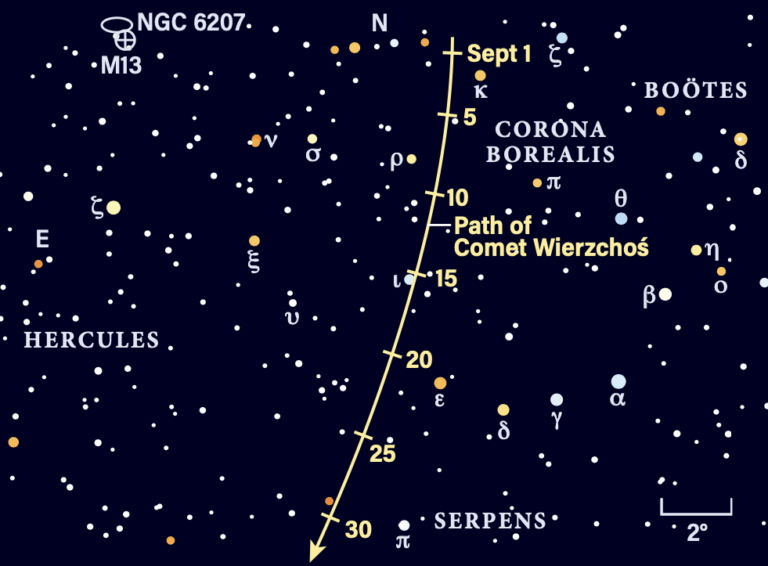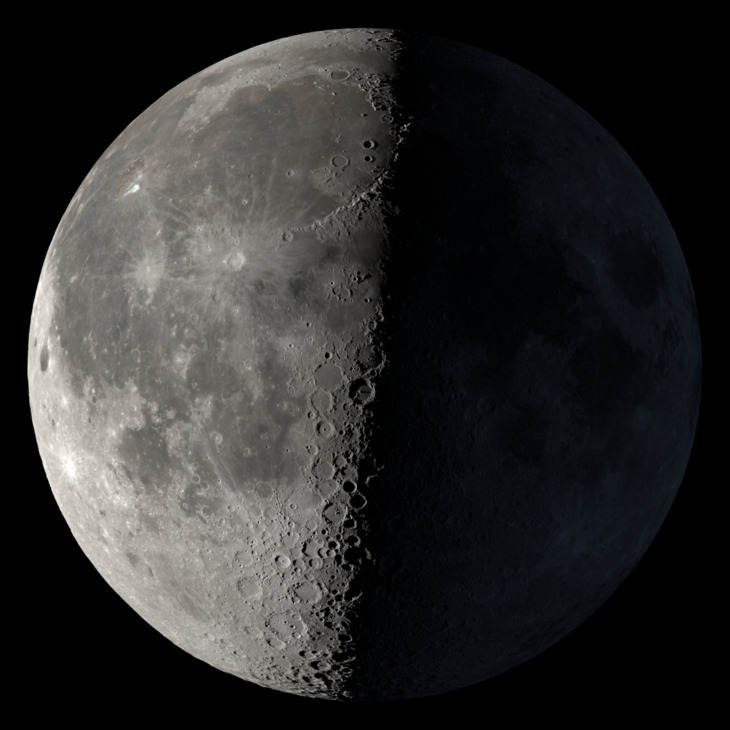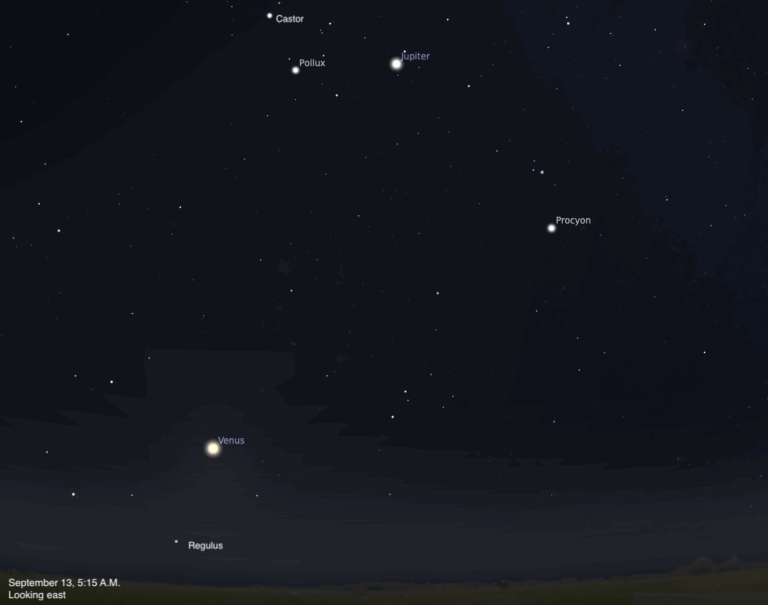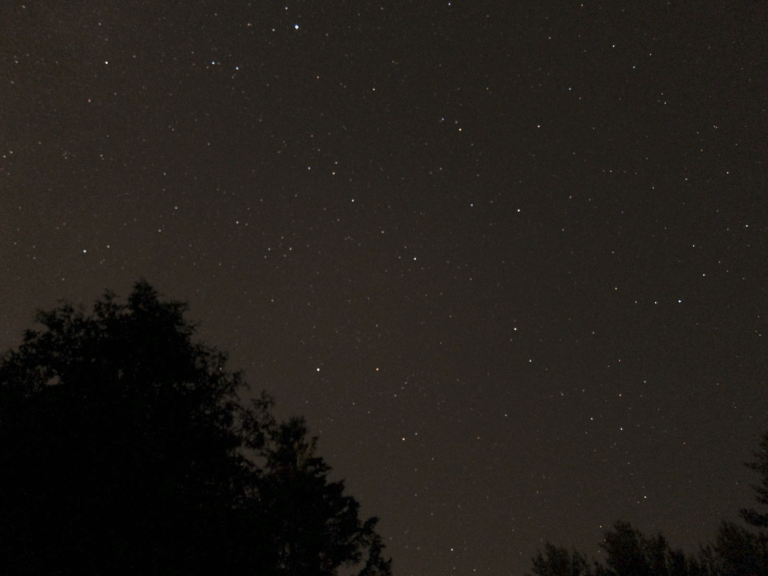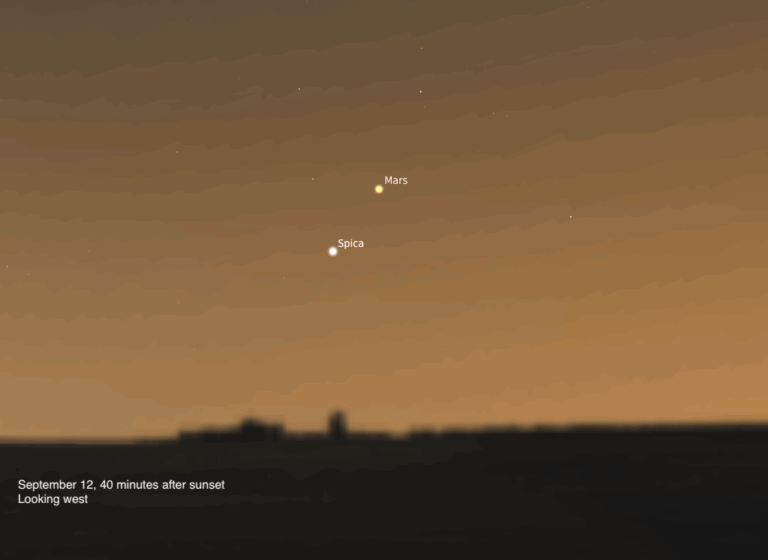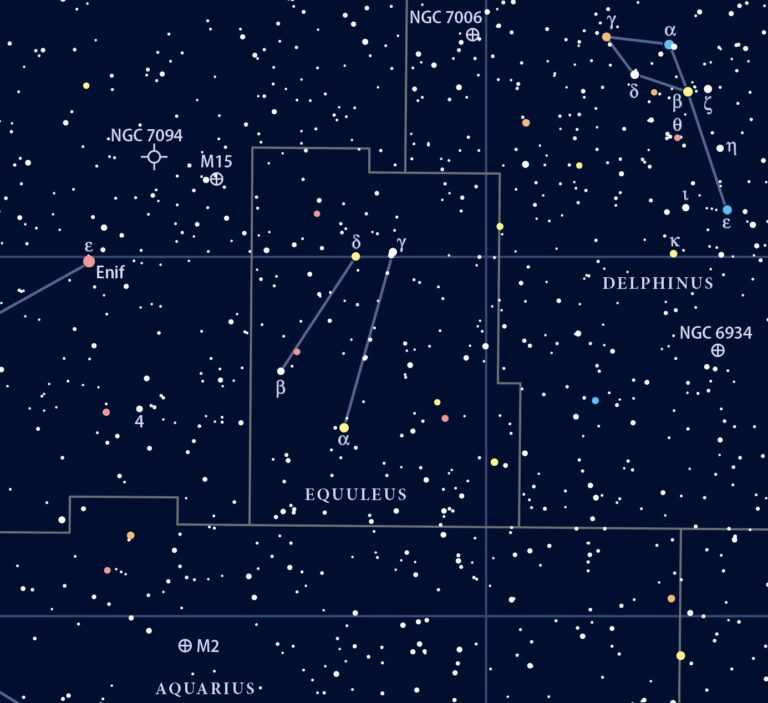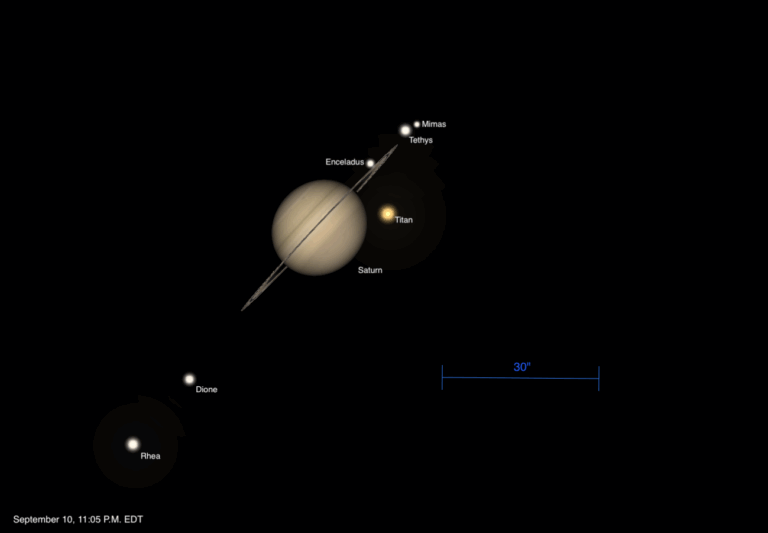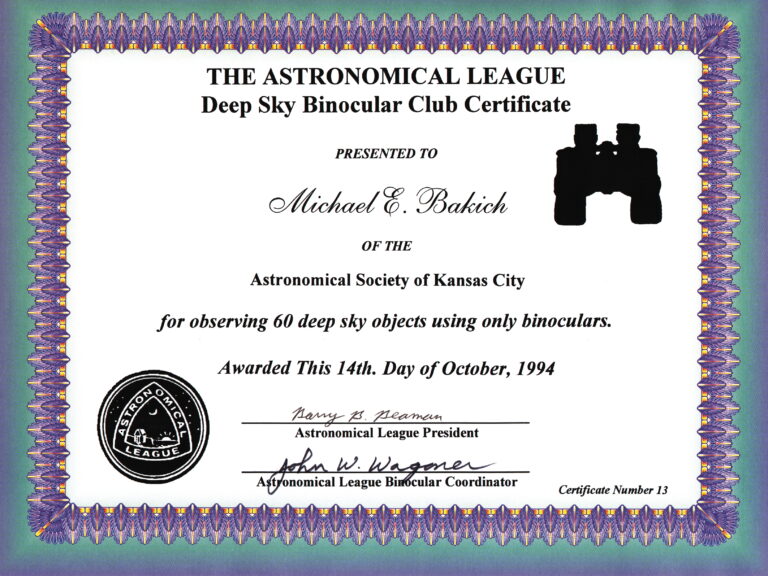Key Takeaways:

With the Milky Way’s curtains of cosmic dust drawn away, the spring sky window opens toward the deepest recesses of the universe. The view offers us an unparalleled opportunity to explore the depths of intergalactic space.
Commanding center stage in the April sky is Leo the Lion. Within its boundaries are several galaxies bright enough to see through binoculars, albeit with some effort.
The two brightest are M65 and M66. They appear just 20′ apart, to the southeast of the star Theta (θ) Leonis. Theta marks the right angle in the triangle of stars forming Leo’s back and tail.
Charles Messier discovered M65 and M66 on March 1, 1780. Seven years earlier, on November 1, 1773, a comet he had discovered passed between these two galaxies. Messier’s records show he was viewing his comet that evening, but he “did not see [the galaxies], without doubt due to the light of the comet.”
To find this galactic pair, drop 2.5° (or about half a binocular field) south of Theta Leonis to 5th-magnitude 73 Leonis. From there, glance very carefully about half a field to the left (east-southeast). Can you spot a dim smudge of light there, just south of a faint star? If so, congratulations — you just found M66.
Messier’s notes describe M66 as “very weak.” True, it is faint, but it is certainly well within the grasp of most binoculars. My notes made through 10×50 binoculars recall it as an “oval nebulous disk highlighted by a brighter central core, which appears stellar.”
M66 is classified as a type Sb spiral, with two arms curving away from the galactic nucleus. The western arm appears distended, probably due to a game of gravitational tug-of-war waged with a neighboring galaxy. There appears to be a large amount of cosmic dust and reddish nebulae scattered throughout M66’s spiral halo, both signs of extensive star-formation regions triggered by intergalactic tidal forces.
When you spot M66, you may also notice a dimmer oval smudge of light just to its west. That’s type Sa spiral M65, which shows tightly wound spiral arms in photographs. The arms appear uniform and neatly arranged, leading astronomers to conclude that M65 is not the cause of M66’s disheveled appearance.
M65 is about half a magnitude fainter than M66, and therefore more challenging. If you have trouble, try supporting your binoculars on a tripod, fence post, or by some other means to steady the view. Like M66, M65 presents an oval disk surrounding a starlike core. Although they appear about the same length, M65 looks thinner because of its slightly narrower tilt from our perspective.
I can see M66 through my 10x50s from my suburban backyard fairly routinely, but M65 takes a better-than-average night. Under superior conditions, however, I’ve spotted both through braced 7×35 binoculars.
Looking at charts of the area, you’ll notice a third galaxy just north of M65 and M66. That’s NGC 3628. This Sc spiral has the loosest spiral structure of the three. From our vantage point, we see this distant island universe almost exactly edge-on. Telescopes show the galaxy’s edge is girdled by a conspicuous band of dark dust clouds, which effectively obscure the bright central region and hide most of the young stars in the spiral arms.
Try as I might, I’ve never been able to see NGC 3628 through my 10x50s. It also gives my 16x70s a run for their money. Only when piloting my 25x100s can I make out a faint smudge of grayish light just north of the other two. It’s a toughie.
Let’s wrap up our survey this month by visiting a fun binocular asterism. Follow a zigzag line south of Theta Leonis, past the stars Iota (ι) and Sigma (σ) Leonis, to a small four-star arc that hooks to the southeast. The brightest star in the arc, 4th-magnitude Tau (τ) Leonis, teams with a fainter point to its southeast to create a pretty double star through binoculars. There’s more: By shifting Tau toward the upper right (northwest) corner of your field, you should spot not one, not two, but three more faint doubles. All four pairs collectively fall into an X pattern. Add them together, and you get an asterism that I like to call the Double Cross. None of the four pairs is a true physical binary since all eight stars are at very different distances, but that doesn’t detract from their unique appearance through our binoculars.
We all have favorite binocular objects. I’d enjoy hearing about yours — contact me through my website, philharrington.net.
And always remember that two eyes are better than one.


